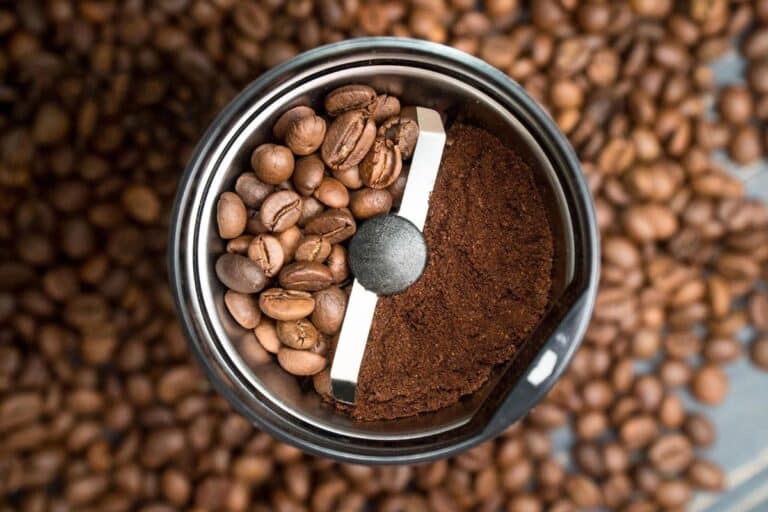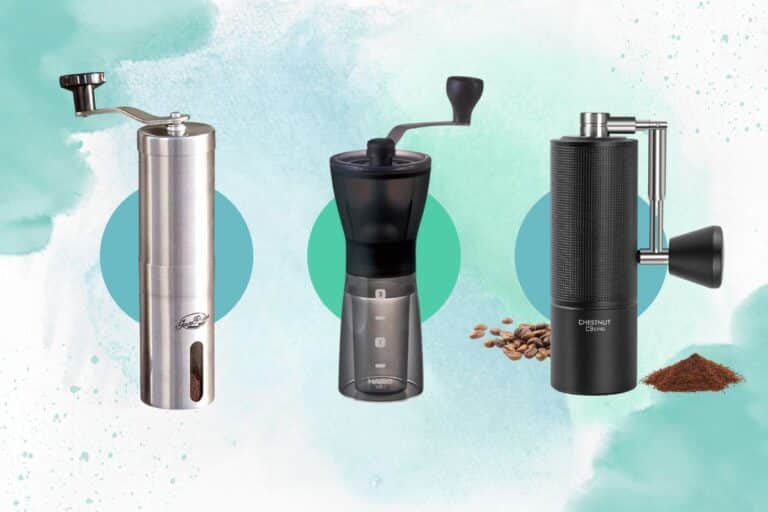Did you know that the world consumes over 2.25 billion cups of coffee every day, with espresso being one of the most popular choices? Espresso, with its rich, aromatic flavor, captivates coffee lovers around the globe. Whether you’re a seasoned coffee lover or just starting to explore the world of espresso, there’s always something new to learn about this beloved beverage.
In this comprehensive guide, we’ll dive deep into everything you need to know about espresso. We will explore its fascinating origins, discuss the unique brewing techniques, and offer expert tips for making the perfect shot at home. Join us as we uncover the art and science of espresso, and discover how you can enjoy this cherished coffee drink to the fullest.
Understanding Espresso
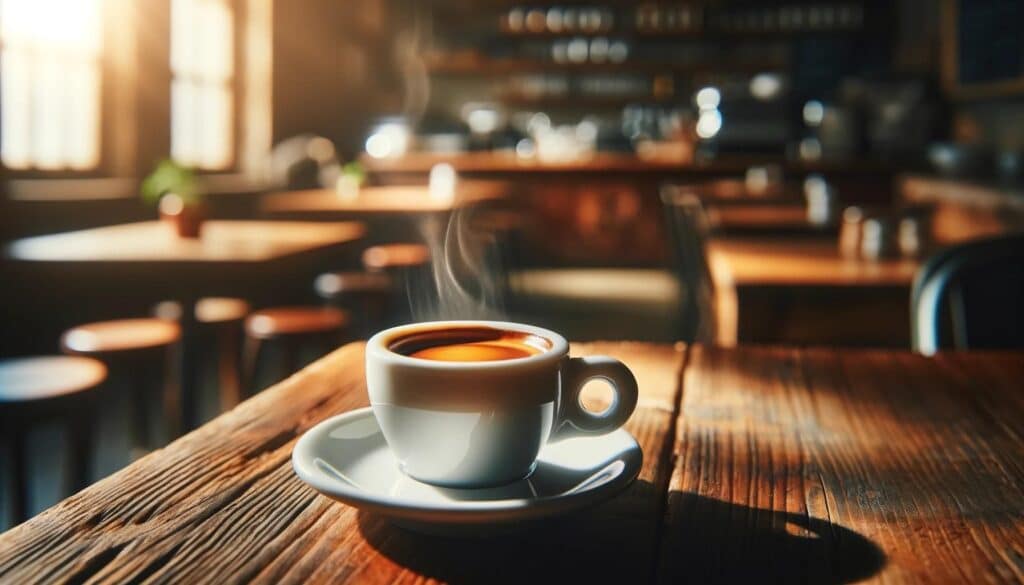
What is Espresso?
Espresso (pronounced ess-PRESS-oh) is a concentrated form of coffee served in small, strong shots. Baristas create it by forcing hot water through finely-ground coffee beans at high pressure. This method produces a thick, robust coffee with a unique flavor profile. The key characteristics of espresso include its intense flavor, thicker consistency, and the presence of a crema – a golden, creamy layer on top of the shot.
History and Origins
Espresso originated in Italy in the early 20th century. Luigi Bezzera invented the first espresso machine in 1901, aiming to make a quick coffee beverage. The term “espresso” itself means “express” or “fast” in Italian, reflecting its rapid preparation time. Over time, espresso’s popularity spread beyond Italy, becoming a global phenomenon. Coffee enthusiasts worldwide embraced espresso for its bold flavor and versatility in various coffee drinks.
Espresso vs. Coffee
Differences in Preparation
Espresso and coffee differ significantly in their preparation methods. To make espresso, baristas use an espresso machine to force hot water through finely-ground coffee under high pressure. This process takes about 25-30 seconds. In contrast, brewing coffee involves pouring hot water over coarser coffee grounds, allowing it to steep or drip through a filter. This method takes several minutes, depending on the brewing technique.
Grind Size
The grind size for espresso is much finer than for regular coffee. Espresso requires a consistency similar to powdered sugar to ensure proper extraction. In contrast, coffee grind sizes vary based on the brewing method, from coarse for French press to medium for drip coffee.
Flavor Profile
Espresso has a more intense, concentrated flavor compared to regular coffee. It delivers a robust, full-bodied taste with a thicker, creamier texture. The crema on top adds a rich, lingering aftertaste. Regular coffee, depending on the brewing method and beans used, can have a wide range of flavors but tends to be milder and more diluted.
The Art of Brewing Espresso
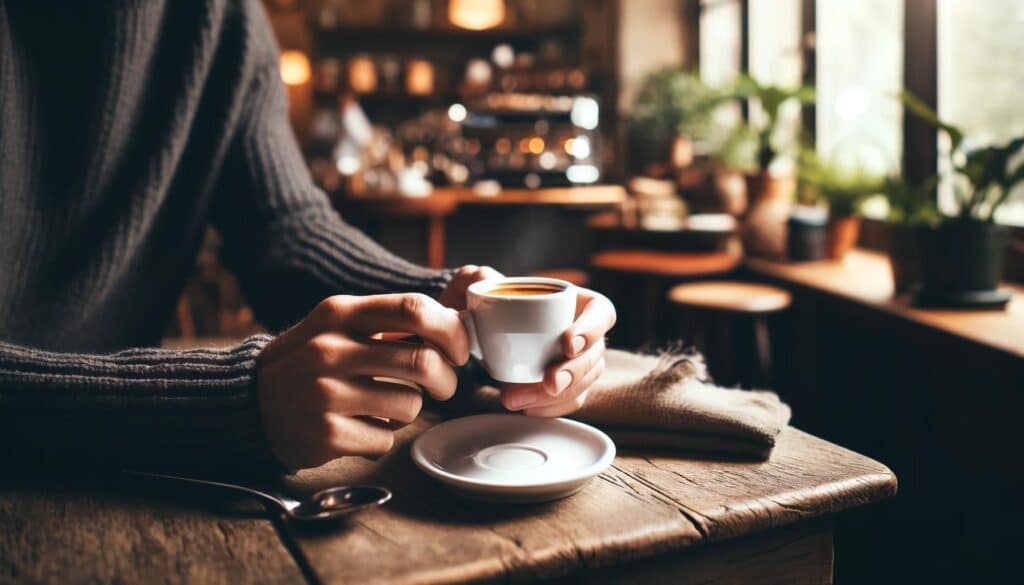
Key Elements
- Blend (Miscela)
- The right coffee blend is crucial for a great espresso. A well-balanced blend combines body, richness, acidity, and brightness. High-quality blends create a complex and nuanced espresso.
- Grind (Macinazione)
- Achieving the correct grind consistency is essential. If the grind is too coarse, the espresso will be watery and bitter. If too fine, the espresso machine may clog, and no coffee will flow. The grind should feel like fine sand and pack well without caking.
- Machine (Macchina)
- The quality of your espresso machine greatly impacts the final product. Different types of machines offer varying levels of control over temperature and pressure. High-quality machines ensure consistent brewing conditions, essential for perfect espresso.
- The Skilled Hand (Mano)
- The barista’s skill plays a significant role in creating perfect espresso. From grinding and tamping to timing the shot, the barista’s expertise ensures the espresso’s quality and consistency.
Choosing the Right Beans
- Types of Coffee Beans Suitable for Espresso
- Not all coffee beans are ideal for espresso. Beans specifically labeled for espresso usually have the desired balance of flavor and body. However, experimenting with various single-origin beans can also yield excellent results.
- Importance of Freshness and Roast Date
- Freshness is critical. Beans should be used within a few weeks of roasting to ensure peak flavor. Check the roast date on the packaging and aim to use beans within two to four weeks of that date.
Grinding and Measuring
- Importance of Grinding Coffee Just Before Use
- Grinding coffee just before brewing preserves its aroma and flavor. Ground coffee stales quickly, losing its essential oils and nuances. For the best espresso, grind your beans right before use.
- How to Measure the Perfect Dose for Single and Double Shots
- Use a precise scale to measure coffee. For a single shot, use about 7-9 grams of coffee; for a double shot, use 14-18 grams. Ensure the coffee is evenly distributed and firmly tamped in the portafilter.
Pulling the Perfect Shot
- Step-by-Step Guide to Pulling a Shot
- Step 1: Preheat the espresso machine.
- Step 2: Grind the coffee to a fine consistency.
- Step 3: Measure and distribute the coffee in the portafilter.
- Step 4: Tamp the coffee evenly and firmly.
- Step 5: Insert the portafilter into the machine and start the extraction.
- Step 6: The shot should take about 25-30 seconds to pull.
- Visual and Taste Indicators of a Well-Pulled Shot
- A well-pulled shot has a rich, caramel-colored crema. The taste should be balanced, with no overpowering bitterness or sourness. The texture should be thick and smooth.
Frothing Milk
- Techniques for Frothing Milk to Achieve the Perfect Texture
- Use a steam wand to froth milk. Position the wand just below the surface to introduce air and create microfoam. Move the pitcher to create a whirlpool effect for even frothing.
- Tips for Using Different Types of Milk (Cow’s Milk, Plant-Based Alternatives)
- Full-fat cow’s milk creates the creamiest texture. For plant-based alternatives, choose barista-specific versions designed to froth well. Each type of milk froths differently, so adjust your technique accordingly.
Mastering these elements and techniques ensures that you can brew exceptional espresso at home, rivaling that of your favorite coffee shop.
Enjoying Espresso

How to Drink Espresso
- Traditional Ways to Enjoy Espresso in Italy
- In Italy, people typically drink espresso quickly while standing at a bar. It’s often enjoyed plain, fresh from the machine. Italians savor the intense flavor and crema, appreciating the craftsmanship of the barista. Espresso is also a popular after-meal drink, especially after dinner.
- Modern Variations and Personal Preferences
- Outside Italy, people enjoy espresso in various ways. Some prefer adding a touch of sugar to balance the bitterness, while others might enjoy it with a small biscuit or chocolate. Espresso can also be served as a double shot or “doppio” for those who want a stronger experience. Some coffee enthusiasts experiment with different brewing methods, beans, and blends to create their unique espresso experience.
Popular Espresso-Based Drinks
- Caffé Americano
- Description: A Caffé Americano is made by diluting a shot of espresso with hot water. This creates a coffee similar to drip coffee but with a richer flavor profile.
- How to Make: Pull a shot of espresso and add hot water to taste. The typical ratio is one part espresso to two parts water.
- Caffé Latte
- Description: A Caffé Latte combines a shot of espresso with steamed milk, topped with a small amount of froth. It’s a creamy and smooth drink, perfect for those who enjoy a milder coffee taste.
- How to Make: Pull a double shot of espresso and add steamed milk, topping with a small amount of milk foam. The usual ratio is one part espresso to three parts milk.
- Cappuccino
- Description: A Cappuccino is a classic Italian coffee drink that balances espresso, steamed milk, and milk foam. It’s known for its rich and creamy texture.
- How to Make: Pull a shot of espresso, add an equal part of steamed milk, and top with a thick layer of milk foam. Traditionally, the ratio is one-third espresso, one-third steamed milk, and one-third foam.
- Red-eye
- Description: A Red-eye combines brewed coffee with a shot of espresso for an extra caffeine kick. It’s a favorite among those who need a strong boost of energy.
- How to Make: Brew a cup of drip coffee and add a shot of espresso. The typical ratio is one cup of coffee to one shot of espresso, but you can adjust based on your preference.
Enjoying espresso in its various forms allows you to experience the depth and versatility of this beloved beverage. Whether you prefer it plain or in a creative coffee drink, there’s an espresso-based option for everyone.
Buying and Storing Espresso Beans
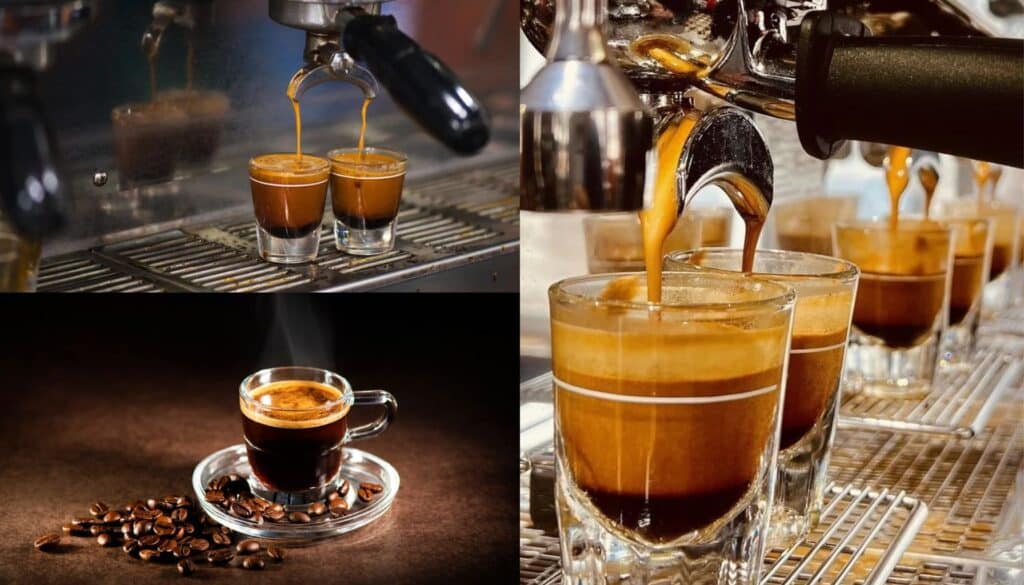
Selecting Quality Beans
- Where to Buy High-Quality Coffee Beans
- Specialty Coffee Shops: Purchase beans from reputable specialty coffee shops. These shops often source high-quality beans and have knowledgeable staff who can guide you.
- Online Retailers: Many online retailers specialize in high-quality coffee beans, offering a wide variety of options from different regions and roasters.
- Local Roasters: Supporting local roasters can provide fresh beans and allow you to learn more about the roasting process and bean origins.
- Factors to Consider
- Origin: The origin of the coffee beans significantly impacts the flavor profile. Beans from different regions (e.g., Ethiopia, Colombia, Brazil) have distinct characteristics. Experiment with various origins to find your preferred taste.
- Roast Level: Espresso typically uses medium to dark roast beans. Darker roasts offer a more robust, fuller flavor, while medium roasts can provide a more balanced and nuanced taste.
- Freshness: Freshness is crucial for quality espresso. Look for beans with a clear roast date on the packaging. Ideally, use beans within two to four weeks of the roast date for optimal flavor.
Proper Storage Techniques
- How to Store Beans to Maintain Freshness
- Airtight Containers: Store coffee beans in airtight containers to protect them from air, moisture, and light. Glass or ceramic containers with sealed lids work well.
- Cool, Dark Place: Keep the container in a cool, dark place, such as a pantry. Avoid storing beans in the refrigerator or freezer, as temperature fluctuations can introduce moisture and degrade flavor.
- Original Packaging: If the beans come in a resealable foil bag with a one-way valve, keep them in their original packaging and store the bag in an airtight container for added protection.
- Tips for Using and Storing Ground Coffee
- Grind as Needed: For the best flavor, grind coffee beans just before brewing. This practice preserves the beans’ essential oils and aromatic compounds.
- Short-Term Storage: If you must store ground coffee, use an airtight container and keep it in a cool, dark place. Ground coffee loses freshness quickly, so use it within a week for the best results.
- Avoid Freezing Ground Coffee: Freezing ground coffee can cause moisture buildup and negatively affect the flavor. Only freeze coffee beans if you plan to store them for an extended period, and grind them just before use.
By selecting high-quality beans and storing them properly, you can ensure that your espresso is fresh, flavorful, and consistently excellent.
Advanced Tips and Troubleshooting
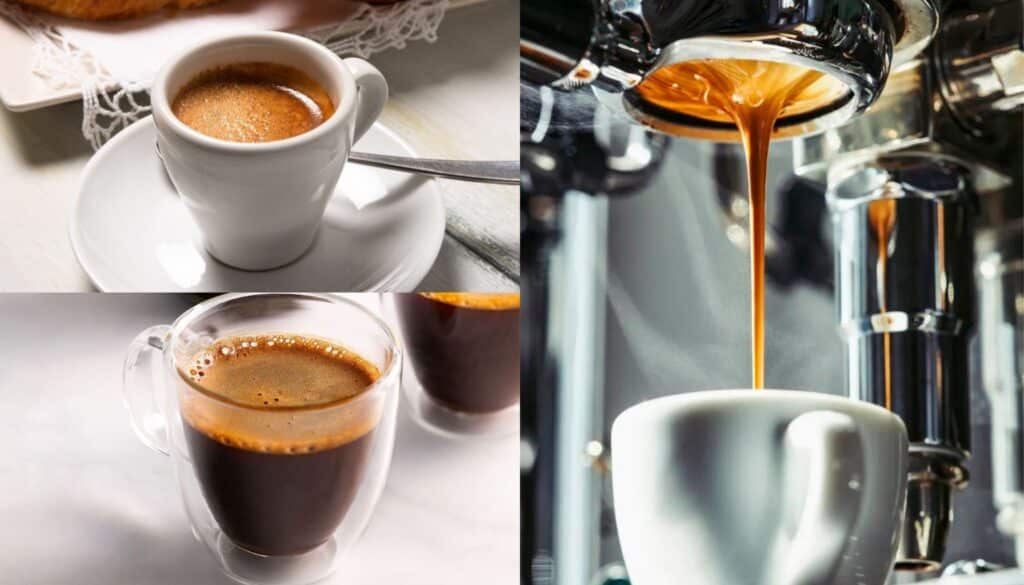
Dialing in Your Espresso
- Adjusting Grind Size and Extraction Time
- Grind Size: The grind size significantly impacts the flavor and quality of your espresso. If the grind is too coarse, the water will flow through too quickly, resulting in under-extraction. If the grind is too fine, the water will flow too slowly, causing over-extraction. Aim for a grind consistency similar to fine sand.
- Extraction Time: The ideal extraction time for a shot of espresso is between 25-30 seconds. If your shot is pulling too fast or too slow, adjust the grind size accordingly. A quicker extraction (under 25 seconds) usually means the grind is too coarse, while a slower extraction (over 30 seconds) indicates the grind is too fine.
- Common Issues and How to Fix Them
- Over-Extraction: Signs include a bitter taste and dark, syrupy shots. To fix this, coarsen the grind slightly and reduce the extraction time.
- Under-Extraction: Signs include a sour taste and watery shots. To fix this, fine-tune the grind slightly and increase the extraction time.
- Uneven Extraction: If you notice uneven extraction (e.g., channeling), ensure you are tamping the coffee evenly and consistently. Distribute the coffee grounds evenly in the portafilter before tamping.
Cleaning and Maintenance
- Routine Cleaning Tips for Espresso Machines
- Daily Cleaning: After each use, clean the portafilter, baskets, and group head. Run hot water through the group head to remove any coffee residue. Wipe the steam wand with a damp cloth and purge it to clear any milk residue.
- Backflushing: Perform a backflush with water daily and with a cleaning solution weekly. Use a blind filter basket to force water and cleaner back through the machine to clean the internal components.
- Deep Cleaning and Descaling Procedures
- Deep Cleaning: Every few months, perform a deep cleaning of your espresso machine. Disassemble and soak removable parts (portafilter, baskets, drip tray) in a coffee machine cleaner. Scrub the group head and shower screen with a brush.
- Descaling: Mineral deposits from water can build up inside the machine, affecting performance. Descale the machine every 2-3 months using a descaling solution. Follow the manufacturer’s instructions for the descaling process, ensuring all parts are thoroughly rinsed afterward.
By mastering these advanced tips and maintaining your espresso machine properly, you can consistently produce high-quality espresso shots and extend the life of your equipment.
Conclusion

In this comprehensive guide, we covered everything you need to know about espresso. We began with an understanding of what espresso is, its history, and how it differs from regular coffee. We then explored the art of brewing espresso, discussing key elements like the right blend, grind size, espresso machines, and the barista’s skill. We provided tips on selecting and storing quality beans, ensuring your espresso remains fresh and flavorful. We also delved into advanced techniques, troubleshooting common issues, and maintaining your espresso machine for optimal performance.
Now that you have the knowledge, it’s time to put it into practice. Making espresso at home can be a rewarding and enjoyable experience. Don’t be afraid to experiment with different beans, grind sizes, and brewing techniques. Each shot you pull will bring you closer to mastering the art of espresso. Remember, practice makes perfect, and each cup is a step towards creating your ideal espresso.
We’d love to hear from you! Share your espresso experiences, ask questions, and let us know which techniques or beans you prefer. If you’re looking for new equipment or high-quality beans, check out our recommended products. Your journey to perfect espresso starts now—let’s make it a memorable one!
Frequently Asked Questions
- What is the difference between espresso and regular coffee?
- Espresso is a concentrated coffee brewed by forcing hot water through finely-ground coffee under high pressure, resulting in a strong flavor and creamy texture. Regular coffee is brewed by dripping or steeping coarser grounds with hot water, resulting in a milder flavor.
- How do I achieve the perfect grind size for espresso?
- The grind size for espresso should be similar to fine sand. Adjust your grinder to produce a consistent, fine grind that allows for a 25-30 second extraction time.
- What are the key elements of a high-quality espresso machine?
- A high-quality espresso machine maintains consistent brewing temperature and pressure, features durable components, and offers user-friendly controls for precise adjustments.
- How do I properly store espresso beans to maintain freshness?
- Store espresso beans in an airtight container in a cool, dark place. Avoid refrigerating or freezing the beans to prevent moisture and odor absorption. Use the beans within two to four weeks of the roast date for optimal freshness.
- What is the ideal extraction time for pulling a shot of espresso?
- The ideal extraction time for a shot of espresso is between 25-30 seconds. If the shot pulls too quickly, the grind is too coarse. If it pulls too slowly, the grind is too fine. Adjust the grind size accordingly to achieve the perfect extraction time.
